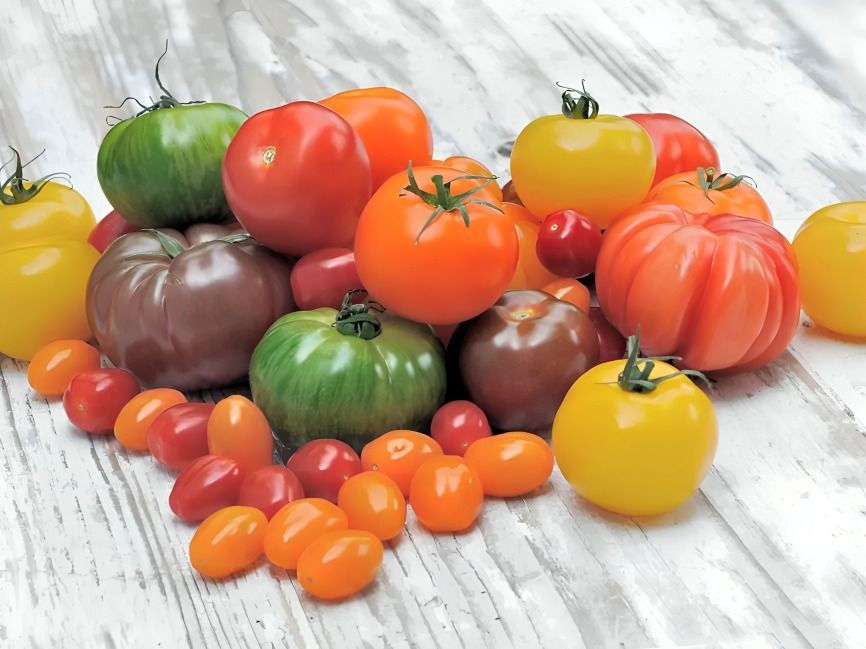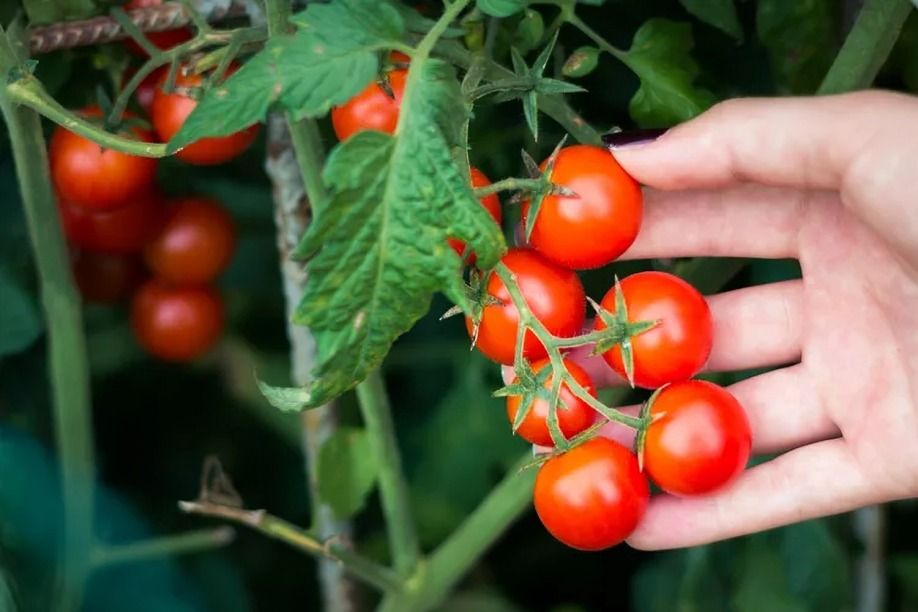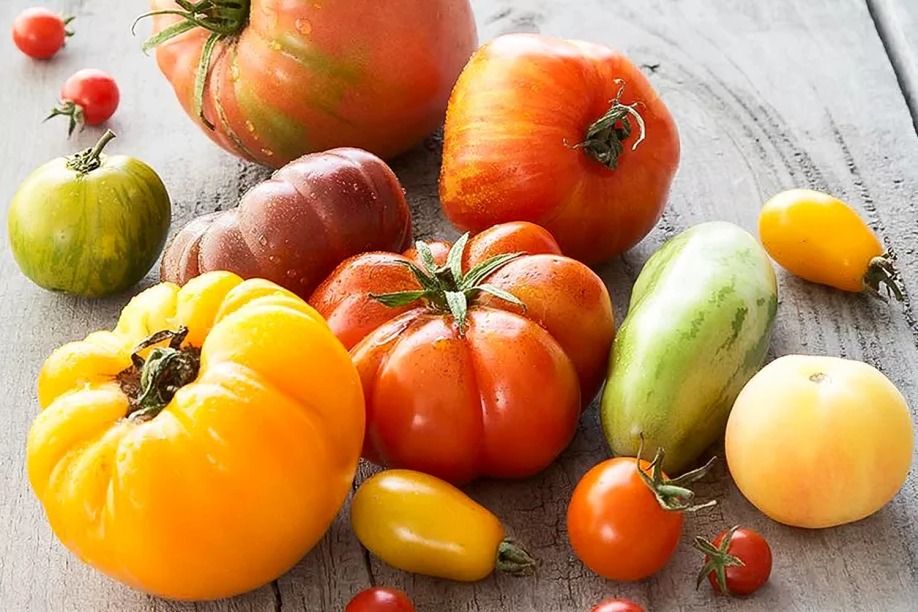
“
Tomatoes are more than just a common kitchen ingredient; they are a fruit with a rich history and numerous fascinating characteristics. In this blog, we will uncover 20 fascinating facts about tomatoes that highlight their unique qualities, historical significance, and health benefits. From their origins in the Andes to their role in global cuisine, tomatoes have a story worth telling. Whether you’re a foodie or just curious, these intriguing tomato facts will give you a new appreciation for this versatile fruit. Join us as we delve into the world of tomatoes and discover what makes them truly remarkable.1
1
”
Botanically classified as a fruit, tomatoes are widely used as vegetables in cooking. Originating in South America, they were first cultivated by ancient civilizations. Despite their botanical classification, their culinary use aligns more with vegetables. 1

Tomatoes come in a wide range of colours, including red, yellow, orange, green, purple, and black. This variety in colour indicates different levels of nutrients and antioxidants, contributing to their diverse uses and health benefits.
Rich in lycopene, tomatoes offer antioxidant properties linked to a reduced risk of chronic diseases. Lycopene helps protect cells from damage caused by free radicals, making tomatoes a beneficial addition to a healthy diet.2
Tomatoes weren’t always welcomed; once thought poisonous due to their nightshade family relation, they faced suspicion. It wasn't until the 18th century that tomatoes overcame this reputation and became popular as a safe, tasty addition to meals. 3
There are over 10,000 varieties of tomatoes worldwide, showcasing an incredible diversity in colour, size, shape, and flavour. From small cherry tomatoes to large beefsteaks, this wide range allows for a vast array of culinary uses and preferences. 4
The first tomato sauce was created in Italy during the 18th century. This innovation laid the foundation for many classic Italian dishes, transforming tomatoes from a regional ingredient to a global culinary staple, enjoyed in sauces, soups, and more. 5
Tomato plants thrive in warm, sunny conditions with well-draining soil. These optimal growing conditions are essential for healthy plant development and abundant fruit production, ensuring a successful harvest of ripe, flavorful tomatoes. 6

Del and Julie Faust from the USA grew the heaviest tomato ever recorded, weighing 11.65 pounds (5.284 kilograms). This record-setting tomato was officially confirmed on October 8, 2022, at the Stillwater Harvest Fest in Minnesota.
Tomatoes have been to space! As part of the ‘Tomatosphere I, II, III, and IV experiments, 600,000 tomato seeds were sent to the International Space Station. These experiments aimed to understand how space affects seed growth and development. 7
Tomatoes first grew in Ecuador around 80,000 years ago. Initially small and wild, they were later cultivated by ancient civilizations. Over time, tomatoes spread globally, becoming a staple in various cuisines.8
On May 11, 2000, a tomato plant grown by Nutriculture Ltd in Mawdesley, Lancashire, UK, reached an impressive height of 19.8 meters (65 feet). This remarkable achievement showcases the potential for extraordinary growth in tomato cultivation. 9
When tomatoes first arrived in Europe in the 16th century, they were small, golden, and cherry-sized, earning them the name ‘golden apples.’ Europeans, believing them to be aphrodisiacs, dubbed them “love apples,” with names like the German ‘goldapfel.’ 10

Cherry tomatoes often grow in clusters, making them a flavorful addition to salads and snacks. Their small size and sweet taste make them perfect for snacking, and they add a burst of flavour and colour to various dishes.

Heirloom tomatoes are prized for their unique flavours and appearance. These traditional varieties are often grown from seeds passed down through generations, offering a diverse range of tastes and textures that set them apart from commercial tomatoes.
Tomatoes are the most consumed fruit globally, surpassing apples and bananas. They’re a staple in cuisines around the world and are used in a wide range of dishes, from sauces to salads.11
The most tomatoes harvested from a single plant in one year is 32,194. This record was achieved at the Epcot Science project in Lake Buena Vista, Florida, with the harvest from May 24, 2005, to April 20, 2006, totalling 522.464 kg (1151.84 lbs).12
China leads the world in tomato production, growing more tomatoes than any other country. With its vast agricultural resources and favourable growing conditions, China dominates global tomato output, surpassing all other nations in both quantity and quality.13
While rare, some individuals have allergies to tomatoes. This allergic reaction can cause symptoms ranging from mild to severe, highlighting the importance of recognizing and managing food allergies for those affected.14
Tomatoes contain solanine, a toxic compound that can be harmful to pets like dogs and cats if consumed in significant amounts. The green parts of the tomato plant, including unripe tomatoes, leaves, and stems, are especially toxic.15

La Tomatina, held annually in Spain, features a massive tomato fight where participants throw around 150,000 tomatoes at each other. This lively festival is known for its fun, messy, and vibrant celebration of tomatoes in the town of Buñol.


